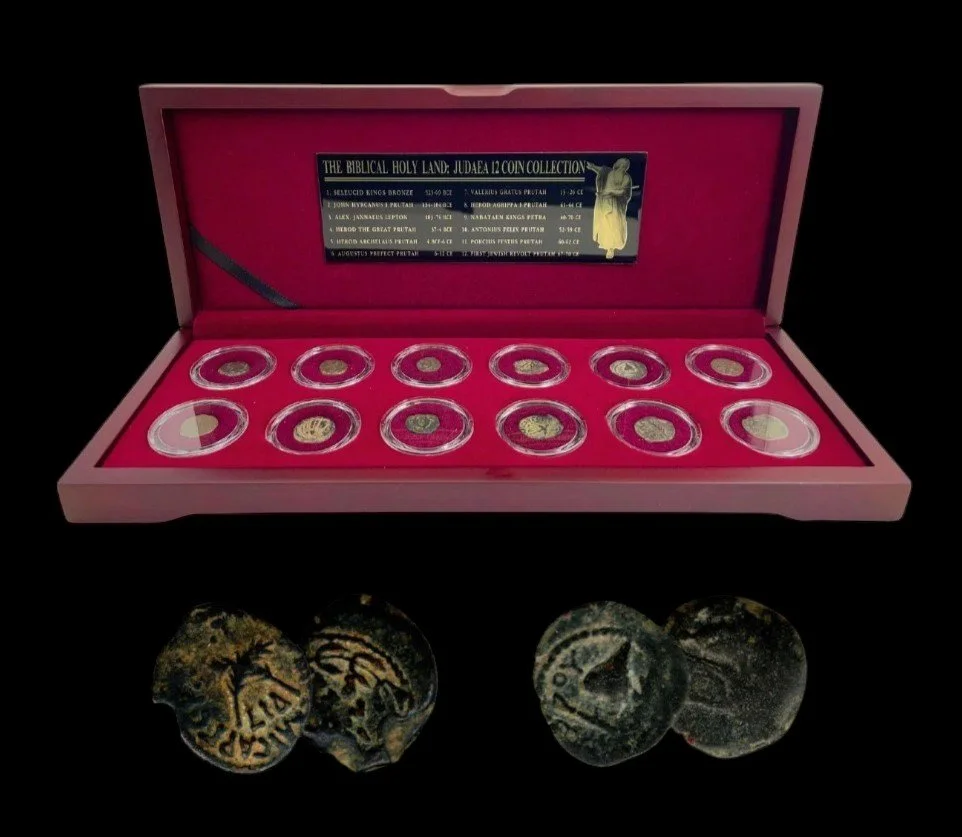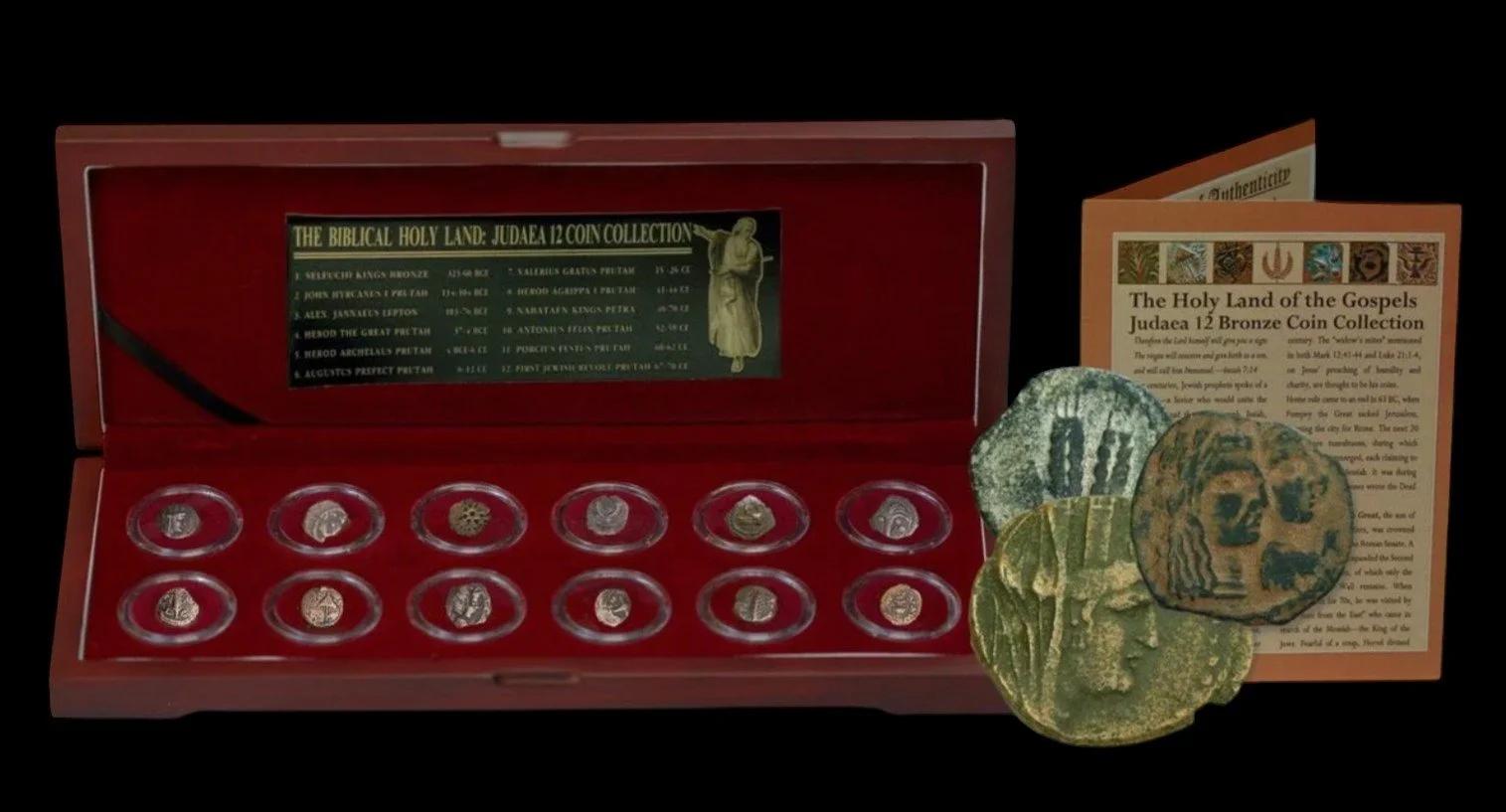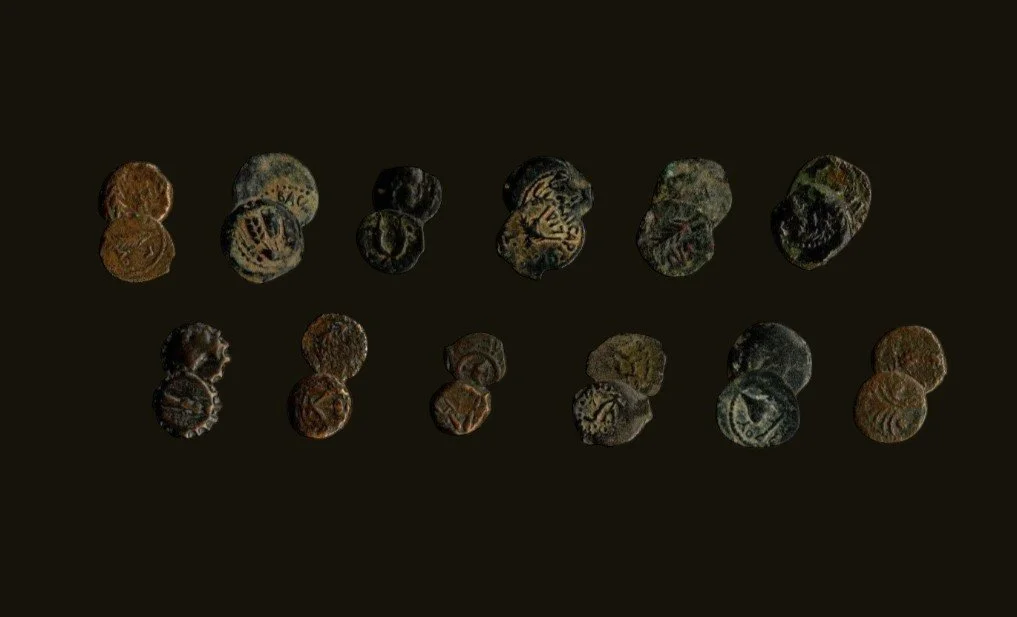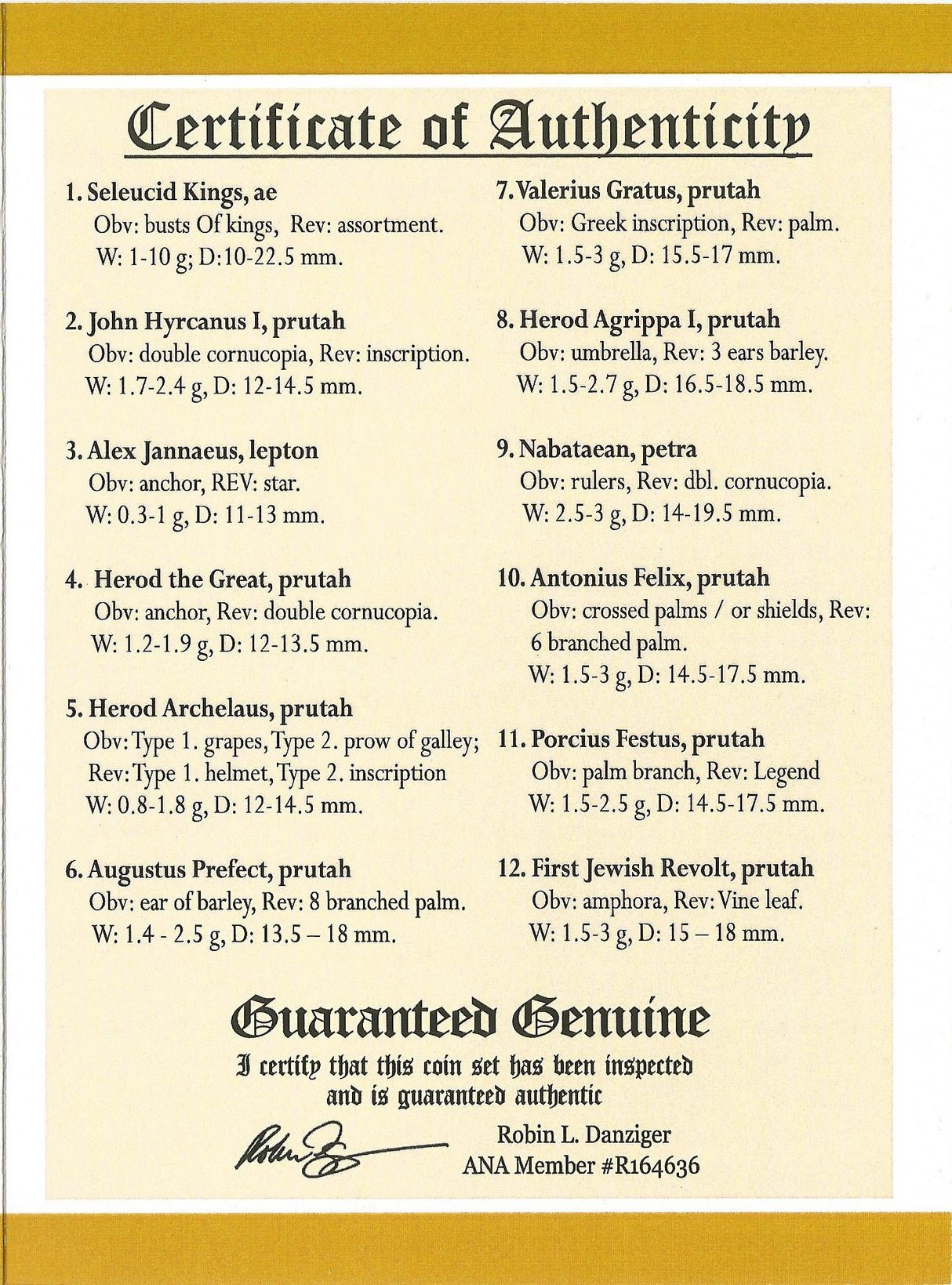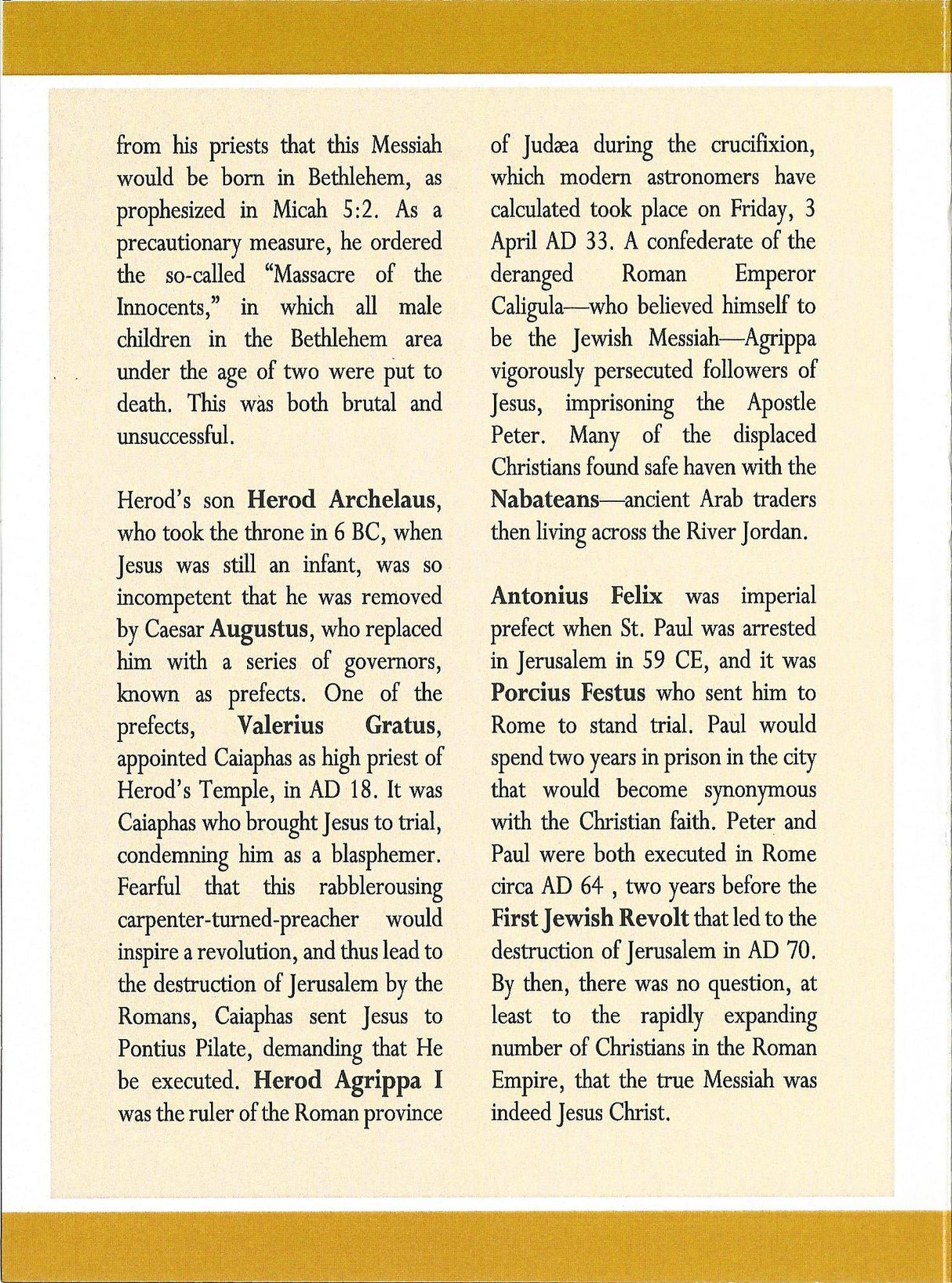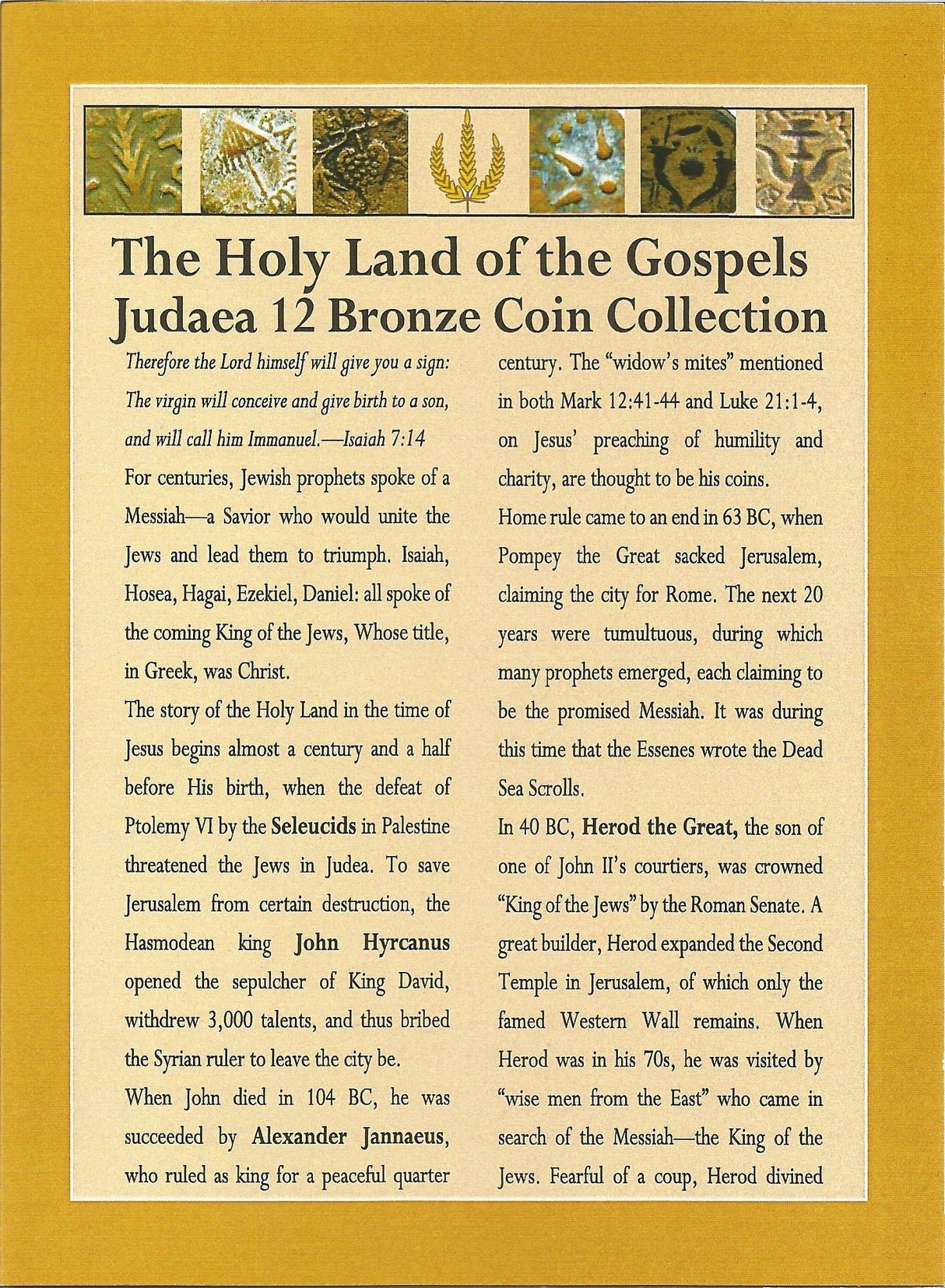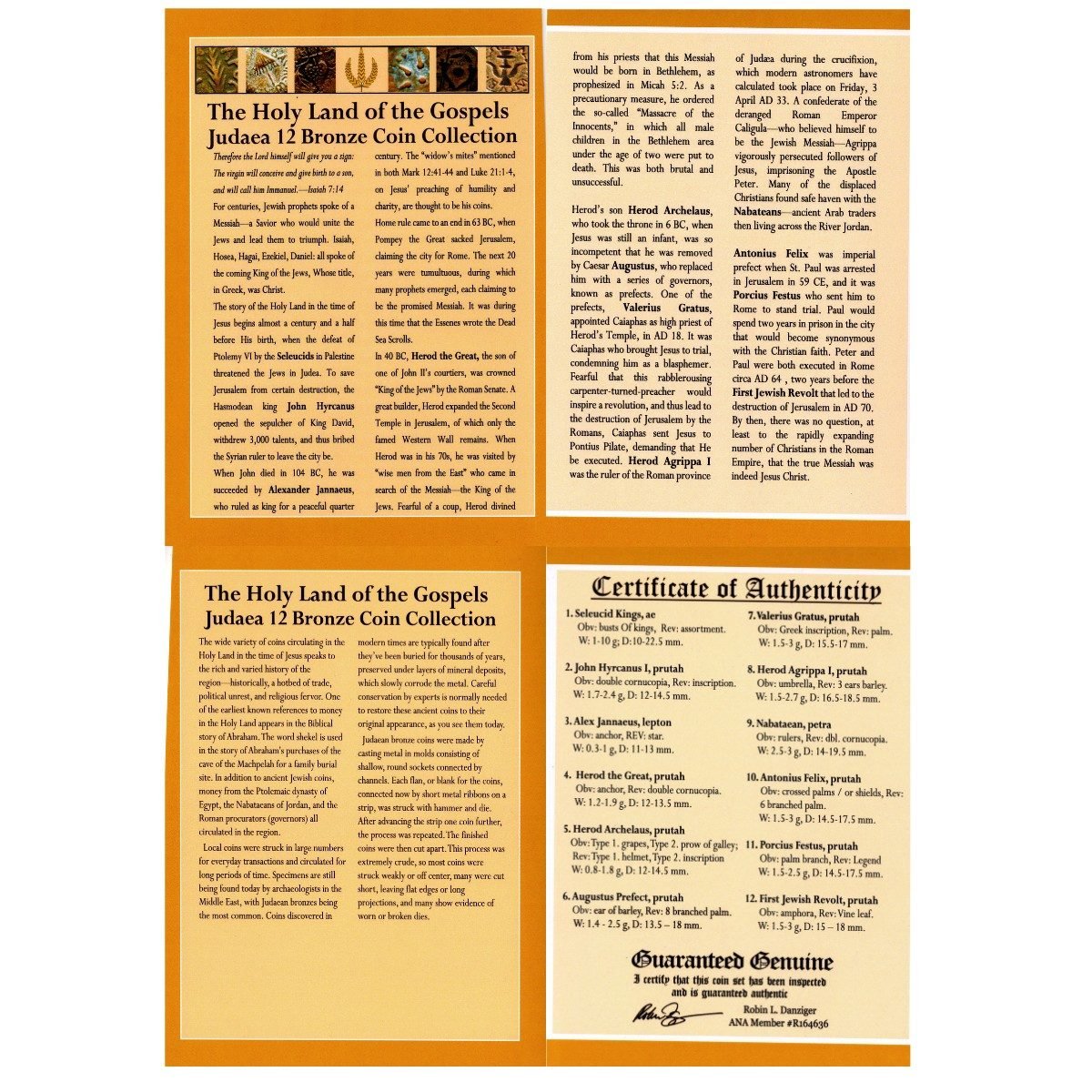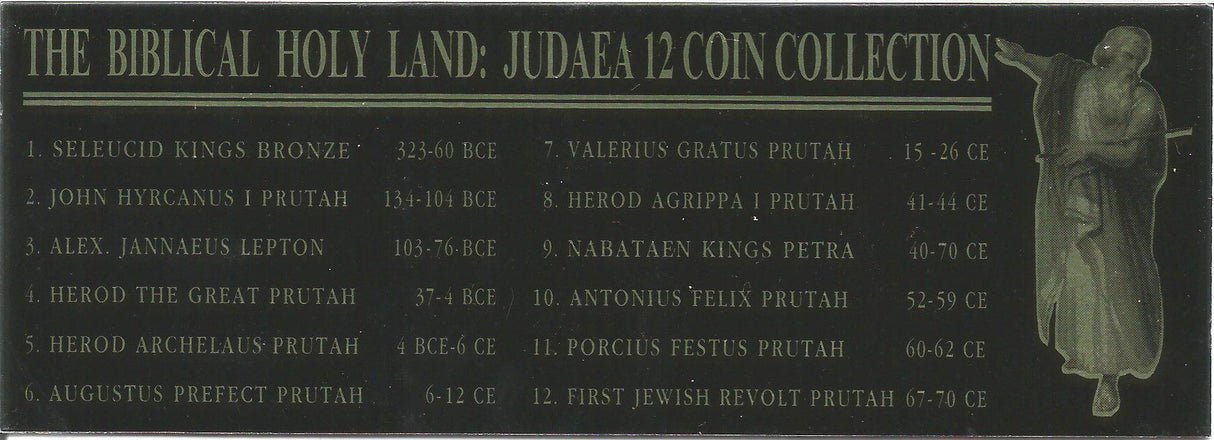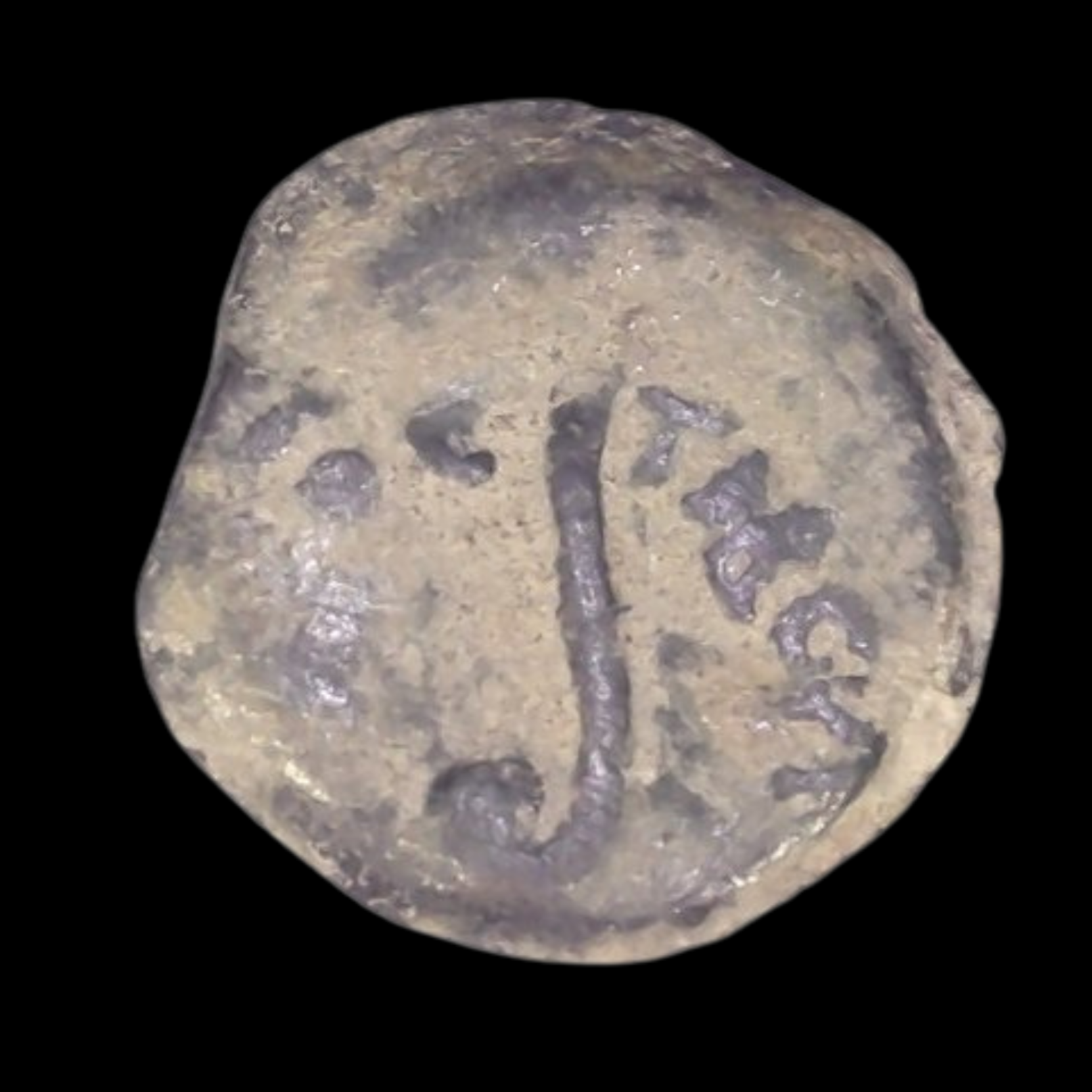 Image 1 of 2
Image 1 of 2

 Image 2 of 2
Image 2 of 2



Pontius Pilate Prutah (1,995 years ago)
This small bronze coin was issued during the governorship of Pontius Pilate in ancient Judea (modern Israel/Palestine). It was minted during a historically significant period when Judea was under Roman provincial control, coinciding with pivotal events in early Christian history.
Coin Description:
Front side: Simple design featuring "LIZ" (Year 17) inscription enclosed within a decorative wreath of laurel leaves
Back side: Inscription "TIBEPIOV KAICAPOC" (of Tiberius Caesar) with a lituus (curved Roman augur's staff used for religious ceremonies)
Technical Details:
Material composition: Bronze
Denomination: Prutah (smallest common denomination in ancient Judea, used for everyday transactions)
Reference number: Hendin-6371
Weight: 2.23 grams
Date of minting: Year 17 of Tiberius' reign (30/31 CE)
Historical Significance:
This coin circulated in Judea (modern Israel/West Bank) during the prefecture of Pontius Pilate, the Roman official mentioned in biblical accounts of Jesus's trial and crucifixion. The dating "LIZ" refers to the 17th year of Emperor Tiberius Caesar's reign, placing it precisely during the period when key events in early Christian history reportedly occurred. While modest in value, these small coins represent tangible evidence of Roman administrative presence in this historically contested region during a pivotal period in religious history.
This small bronze coin was issued during the governorship of Pontius Pilate in ancient Judea (modern Israel/Palestine). It was minted during a historically significant period when Judea was under Roman provincial control, coinciding with pivotal events in early Christian history.
Coin Description:
Front side: Simple design featuring "LIZ" (Year 17) inscription enclosed within a decorative wreath of laurel leaves
Back side: Inscription "TIBEPIOV KAICAPOC" (of Tiberius Caesar) with a lituus (curved Roman augur's staff used for religious ceremonies)
Technical Details:
Material composition: Bronze
Denomination: Prutah (smallest common denomination in ancient Judea, used for everyday transactions)
Reference number: Hendin-6371
Weight: 2.23 grams
Date of minting: Year 17 of Tiberius' reign (30/31 CE)
Historical Significance:
This coin circulated in Judea (modern Israel/West Bank) during the prefecture of Pontius Pilate, the Roman official mentioned in biblical accounts of Jesus's trial and crucifixion. The dating "LIZ" refers to the 17th year of Emperor Tiberius Caesar's reign, placing it precisely during the period when key events in early Christian history reportedly occurred. While modest in value, these small coins represent tangible evidence of Roman administrative presence in this historically contested region during a pivotal period in religious history.















